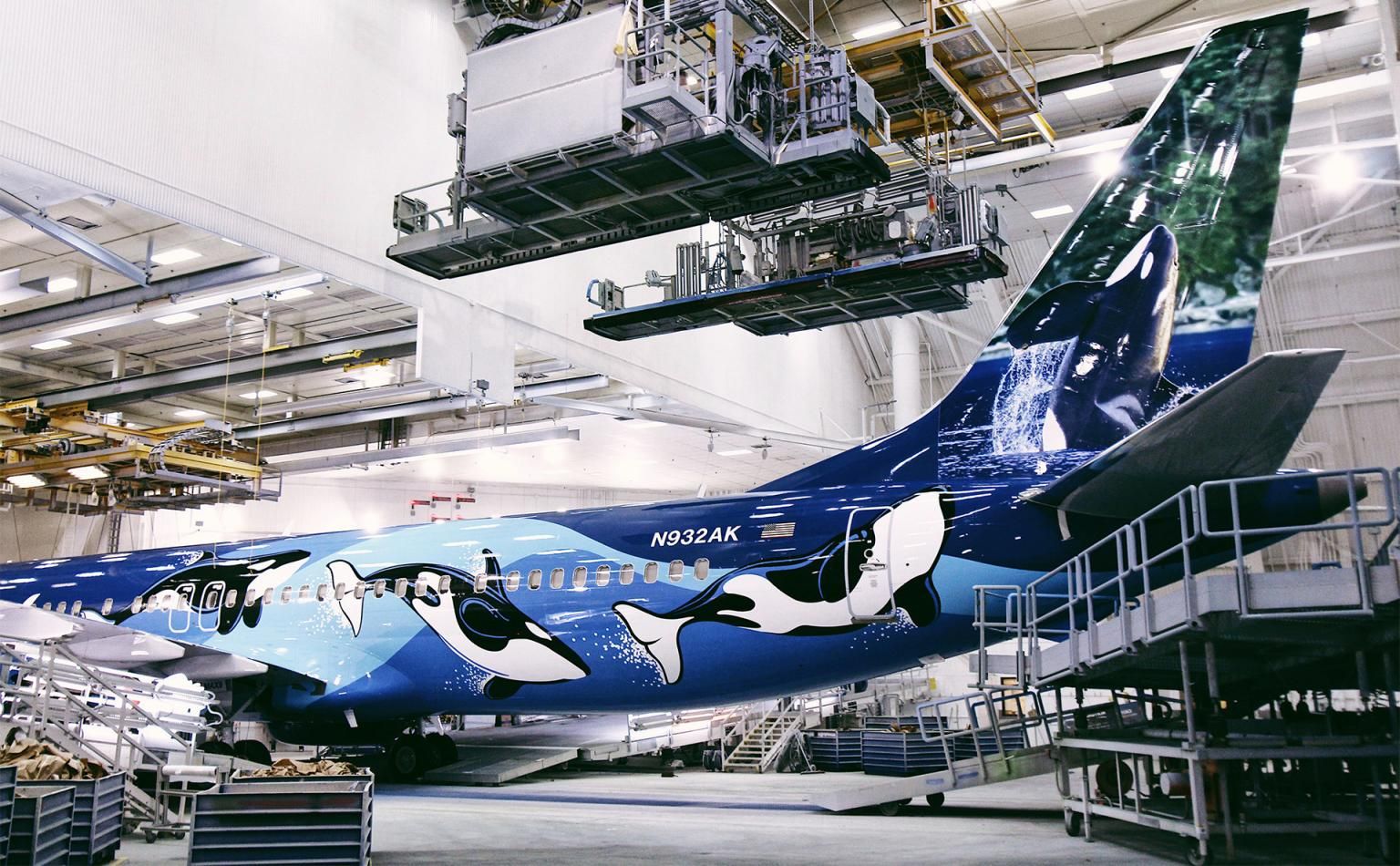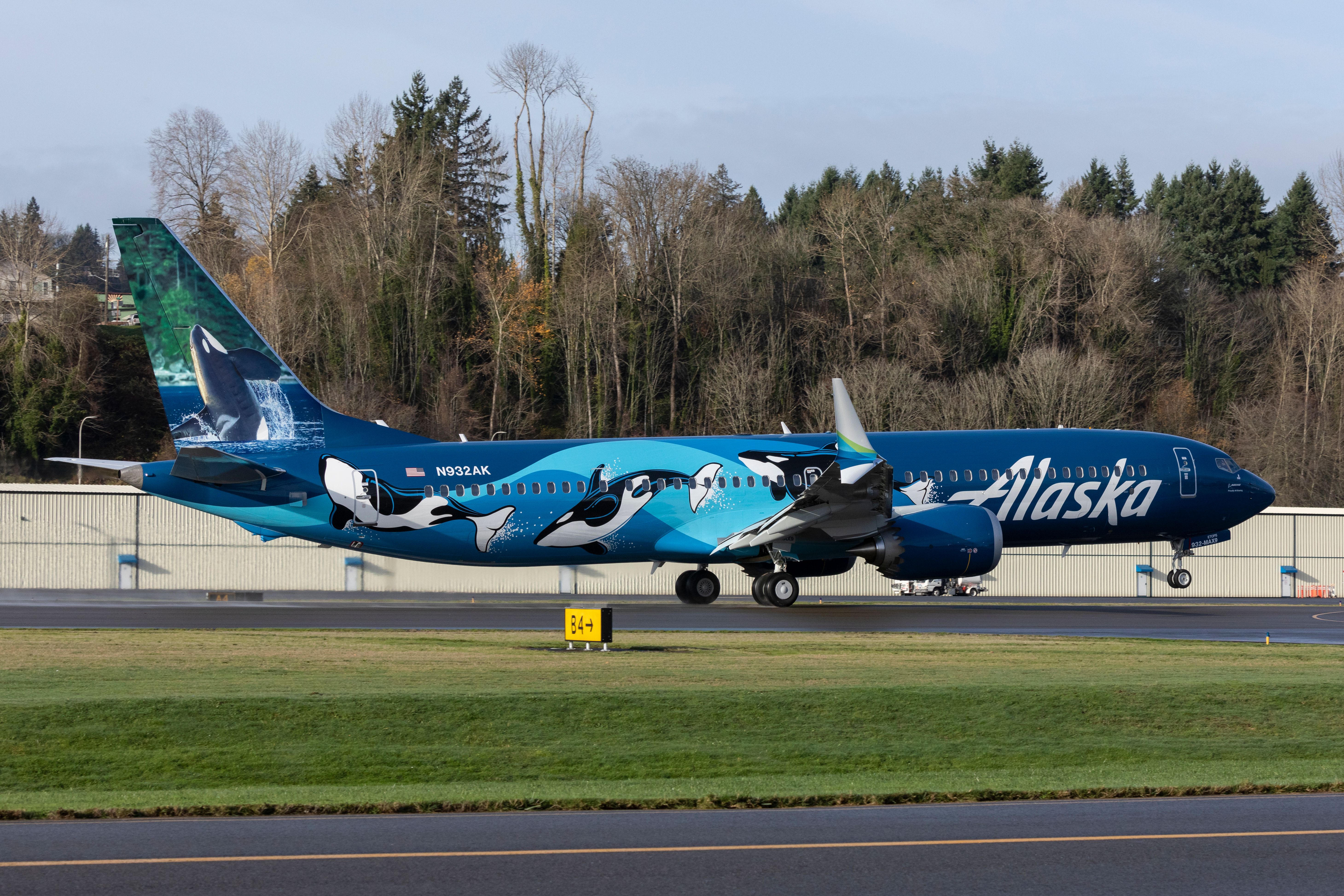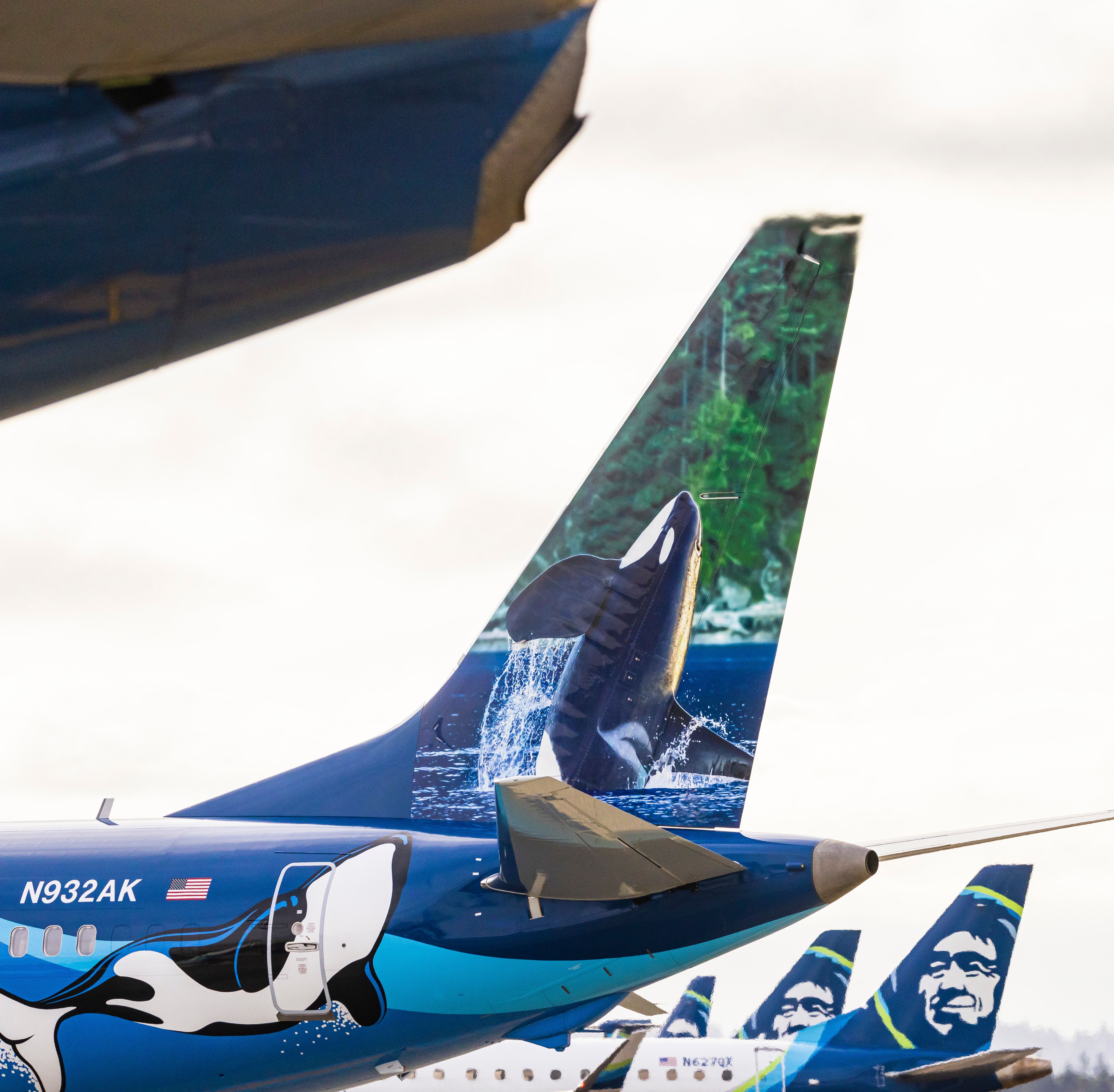From being spotted a bit too early to being officially revealed this week, Alaska Airlines’ orca livery is certainly something special. But it’s unusual in more than its intricate design because, unlike most aircraft liveries, it was inkjet printed.
Jim Farmer, Senior Livery Designer at Teague, explained why this is important in a recent article. He explained,
“On a traditionally painted livery, each color is sprayed from a paint gun separately and by hand. This means no fades, no color blending; think paint by numbers, but with fewer colors. Extra layout, more spray time, and additional drying cycles equate to more hours and more money.
“On the other hand, with a printer, anything goes. And instead of taking days to paint, any design could be printed in a matter of hours.”
Knowing this to be true, Boeing set out to develop a heavily customized inkjet printer, capable of printing just about anything, anywhere. It’s been years in the making, but the US planemaker finally began piloting its direct-to-shape 3D inkjet printer in 2019. Boeing awaited a willing guinea pig for this new technology, and eventually found one in Alaska Airlines.
Teamwork makes the dream work
With Boeing’s technology and Alaska Airlines’ airplane ready and waiting, the project now needed a designer to bring it all together. Teague has been an active partner of Boeing for more than 70 years, and has worked with Alaska for around 20. When presented with the opportunity to create a unique design using pioneering new technology, Teague was up for the challenge.
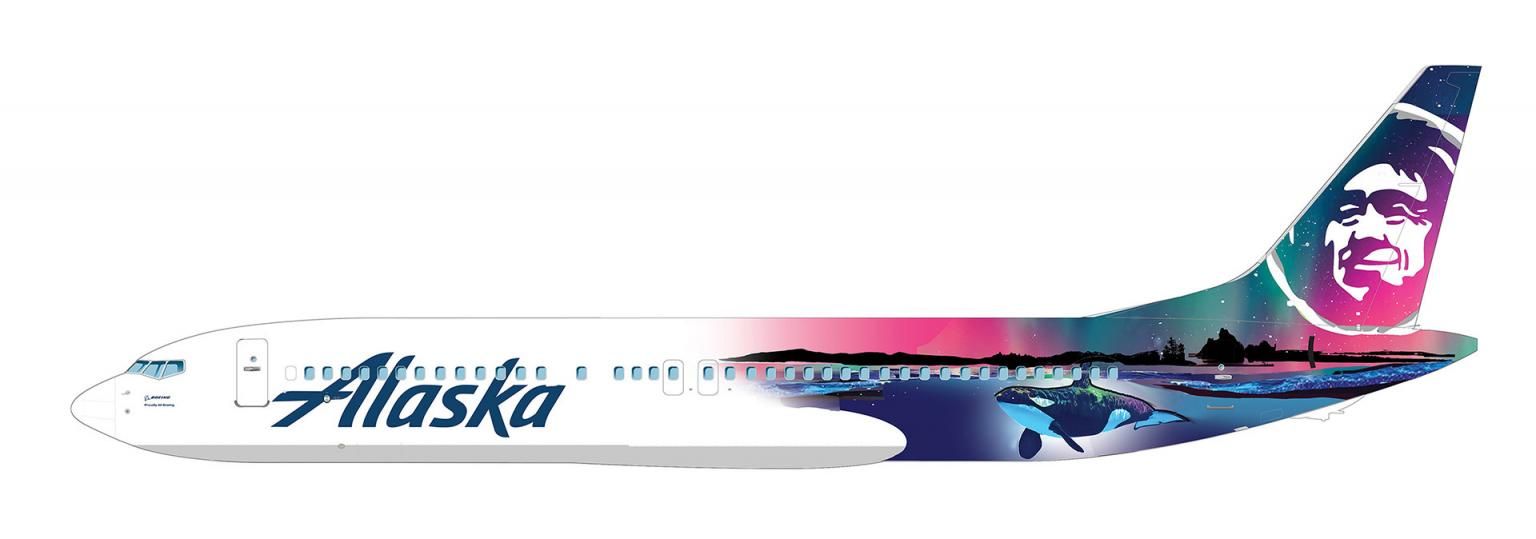
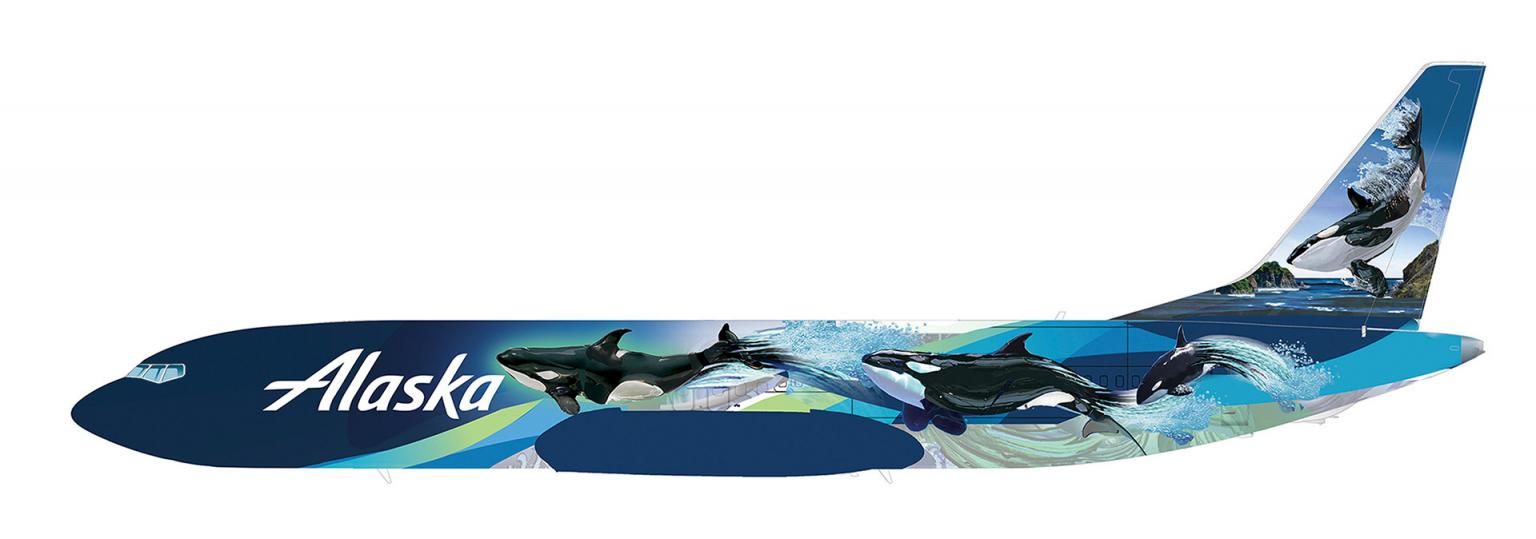
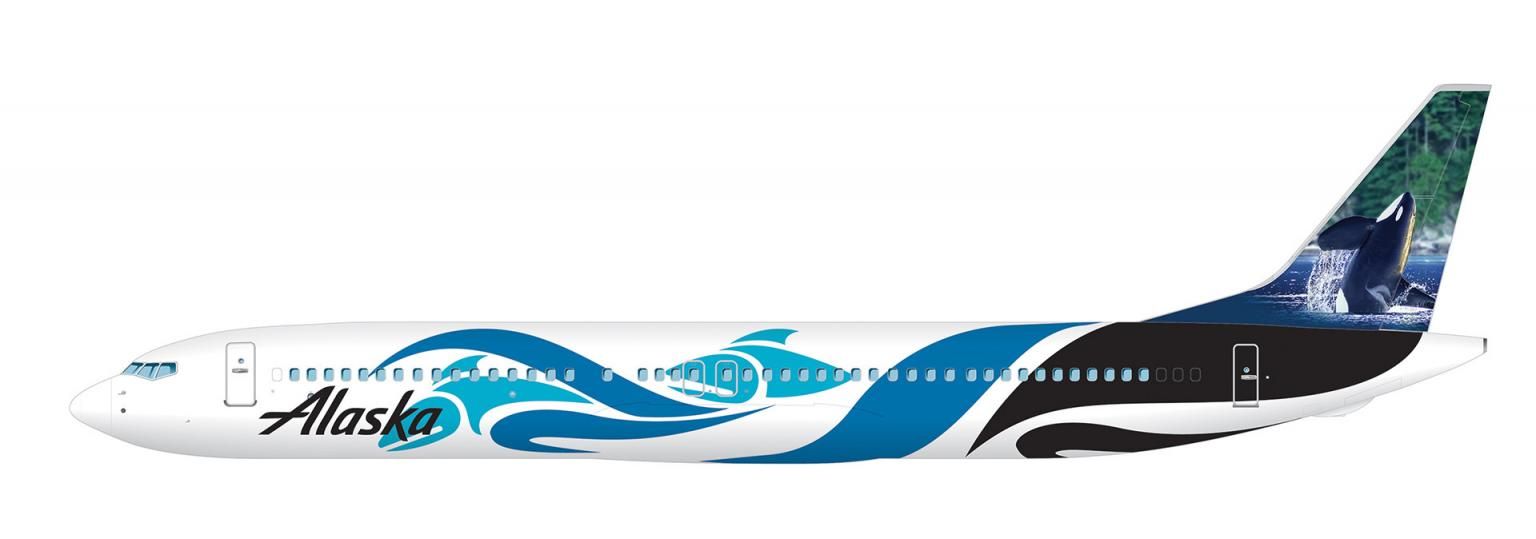
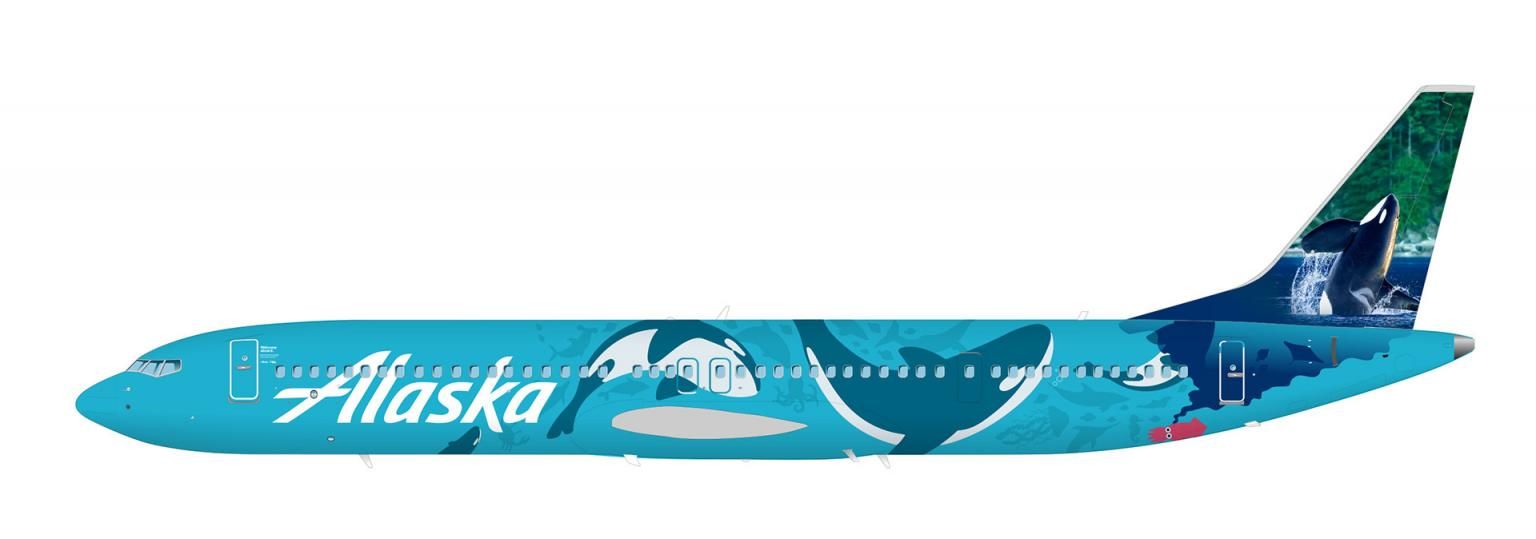
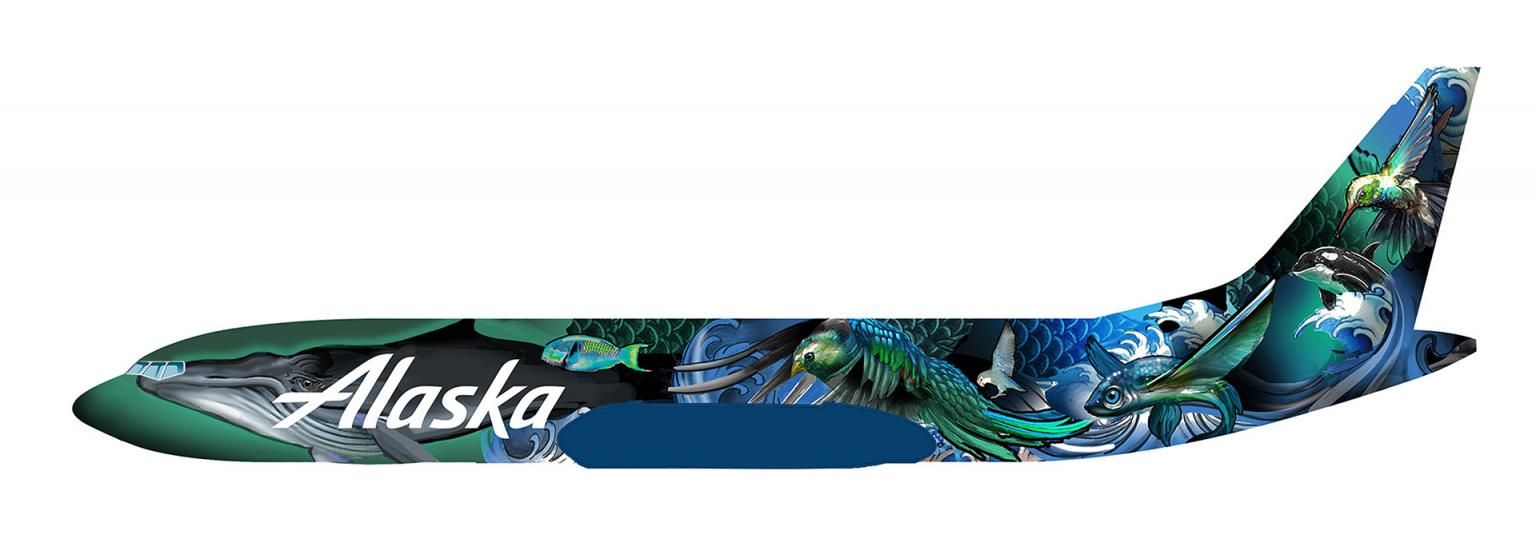
Having settled on the orca as the inspirational symbol it wanted, Alaska Airlines considered a number of different interpretations before settling on the final design. Teague’s Catia designers then stepped in to work out how to turn this 2D concept into a 3D masterpiece. As Farmer explained,
“They took the scheme and wrapped it around lights, doors, windows, and wings—tucking, pinching, altering, and fitting the graphics onto the aircraft with precision. Once everything was in place, the files were delivered to Boeing Design Engineers to create pre-mask stencils for their painters to reference.”
The final step in the process was to apply the livery. At present, Boeing’s patented direct-to-shape inkjet technology is not fully integrated into its production process. What it is ready to do is to print on a vertical stabilizer, which is exactly what it was used for.
Of course, that came with its own set of challenges, because the rest of the livery design had to be applied in a more traditional way. This meant it had to mesh perfectly at the sections where the inkjet-printed tail meets with the rest of the fuselage.
Through the printing of this beautiful tail, much was learned about the capabilities of Boeing’s pioneering technology. It represents a step-change in the way liveries are applied, and could open a world of possibilities for aircraft liveries of the future.

